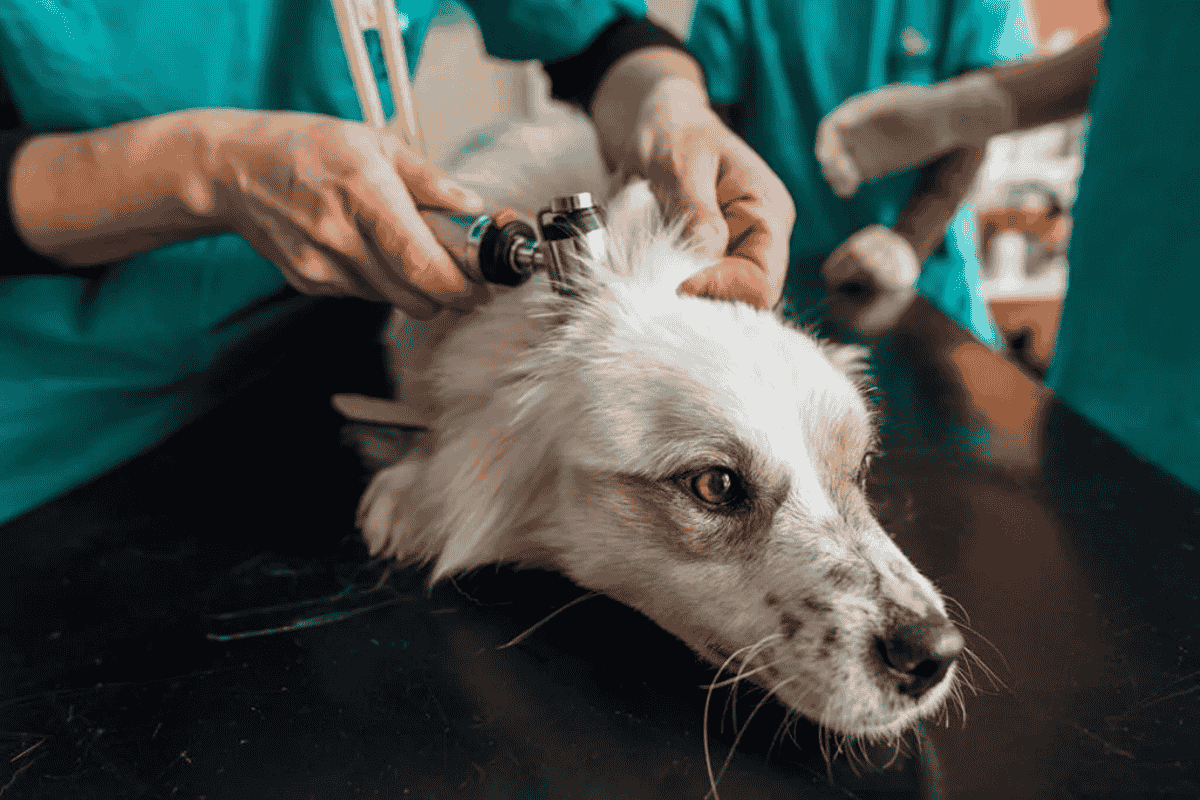Causes of Dog Ear Infections and Diseases
There are several reasons why your dog might develop ear problems. The most common include:
- Bacterial and yeast infections
- Ear mites
- Ear wax or dirt buildup
- Allergies
- Ticks
- Foreign bodies (like grass seeds)
- Polyps or other masses
While the causes differ, they often result in similar symptoms, making veterinary evaluation important.
Symptoms of Dog Ear Problems
Early recognition of symptoms can help prevent discomfort and complications. Signs to look for include:
- Excessive ear discharge
- Redness or swelling
- Signs of pain when ears are touched
- Persistent head shaking or pawing at ears
- Foul odor coming from the ears
Checking your dog’s ears once a week can help you catch these issues before they worsen.
Treatments for Dog Ear Infections and Diseases
Because a dog’s ear canal is shaped like an “L,” veterinarians use specialized instruments to look deep inside. Diagnosis usually involves:
- A thorough ear exam
- Sample collection for lab analysis
- In severe or chronic cases: sedation, X-rays, or cultures
Treatment Options
- Topical medications: Commonly prescribed for bacterial or yeast infections
- Oral medications: May be needed for more advanced infections
- Pain relief: Helps dogs tolerate treatment if they are uncomfortable
- Specialist care: Chronic or severe conditions may require a dermatologist or surgeon
Most infections clear up within a couple of weeks when treated early.
Preventing Dog Ear Infections
You can help reduce the risk of recurring infections by:
- Checking your dog’s ears regularly
- Drying ears thoroughly after swimming or bathing
- Using veterinarian-approved prescription ear cleaners
- Avoiding long-term use of hydrogen peroxide or alcohol (can irritate ears)
Dogs with skin allergies or long, floppy ears (such as Basset Hounds) are more prone to infections and require more frequent maintenance.
When Is a Dog Ear Problem an Emergency?
Most ear infections are not medical emergencies, but there are red-flag symptoms that require immediate veterinary care:
- Head tilt
- Circling or imbalance
- Uneven pupil size
- Systemic illness signs (fever, loss of appetite, lethargy)
Important: If severe neurological signs are present, do not put anything in your dog’s ears before seeing a veterinarian. A ruptured eardrum could make home remedies harmful.












